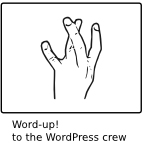my new article has been released! find it at the journal of digital information, entitled, “nine questions to guide you in choosing a metadata schema.”
abstract:
This article is a guide for collection developers at the point of considering a metadata schema for their digital collection. The nine questions asked in this article will assist a developer in clarifying how he wants the collection to be organized, described, and used. This article uses examples to illustrate how these questions guided the development of a digital collection built at the University of Southern California.
Keywords: Metadata, Digital Libraries, Schemas, Collection Development.
the journal of digital information is an open access, peer-reviewed web-based journal with an entirely online submission and review process. they’re moving to a new version of software and i expect their procedures will be smoother as a result.




